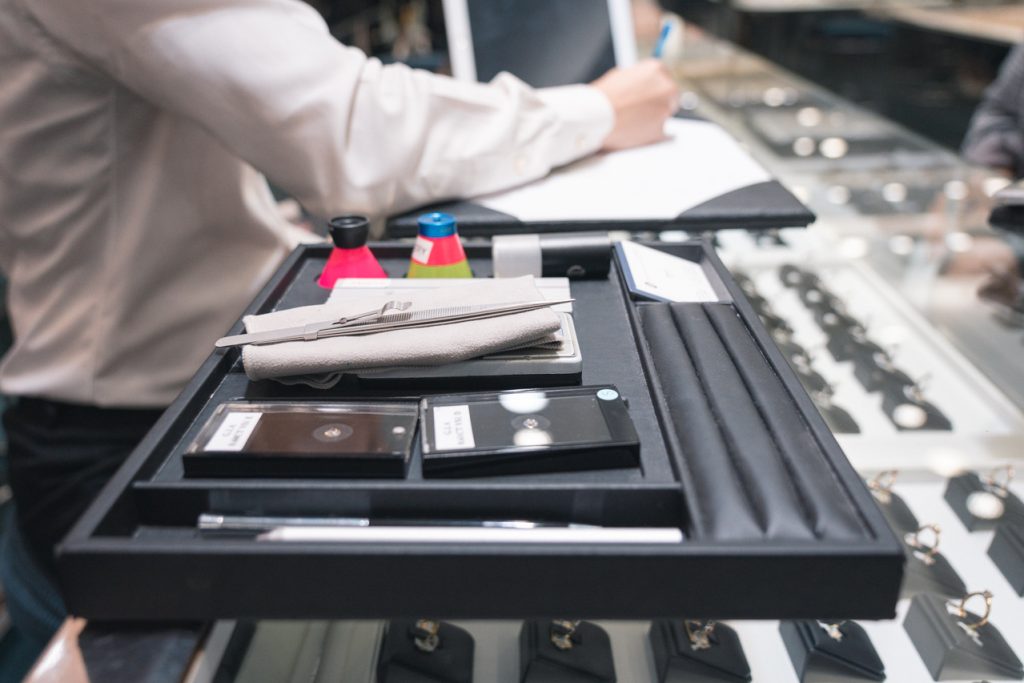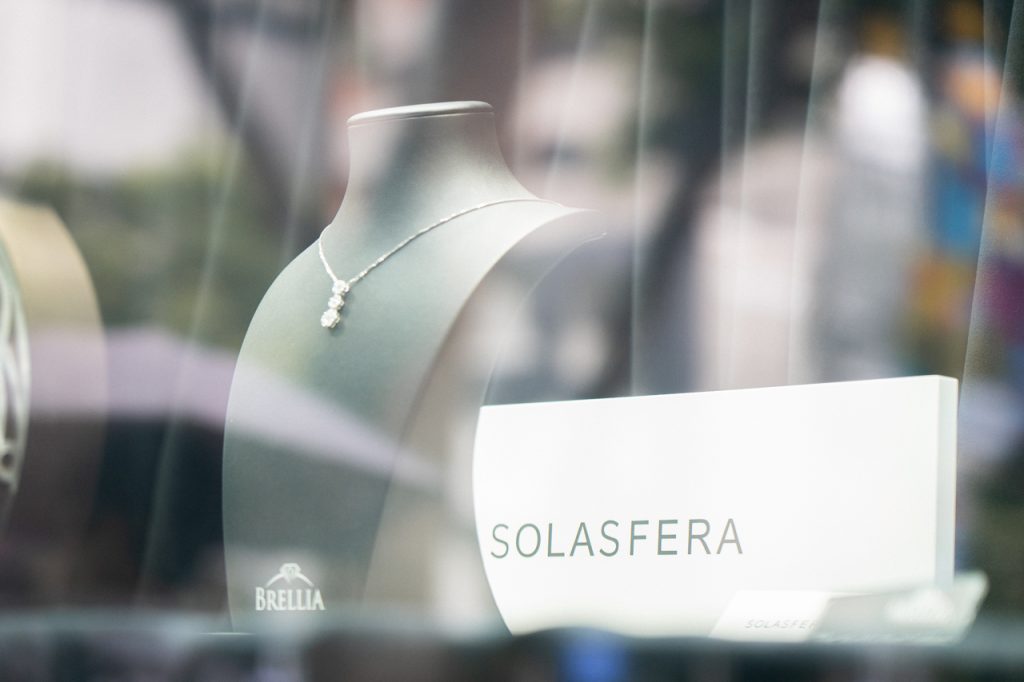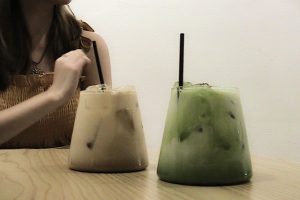It’s 2020—10 years since JANNPAUL opened their doors and they haven’t slowed down one bit. This is apparent through their internet presence and immense reviews online. Either you’ve heard of them, or someone you know has bought from them before.
Regardless, we want to find out what separates JANNPAUL as a jeweller from any other.
In recent times, however, diamonds have started playing a smaller role in every couple’s relationship.
According to a report published by consulting firm, Bain & Co, diamond sales have been slowing down, with factors such as softness in the overall luxury goods market, changing consumer attitudes, and a pullback in demand from the China market contributing to the change in demand.
Locally, it’s the same story. Rather than splashing out on a huge rock, an increasing number of Singaporeans are saving that money for BTO renovations or their honeymoon, opting for cheaper alternatives. Some even forego getting a diamond ring altogether.
What’s going on?

According to 35-year-old Casey Lai, a co-founder of JANNPAUL, a local diamond retailer that prides themselves on providing quality diamonds at prices your wallet will thank you for, most younger customers nowadays are simply looking to get the most bang for their buck. They are a lot more frugal, he tells me.
Cost of living in Singapore has forced us to be more mindful of what we choose to spend on. As a result, we’re nudged to de-prioritise an expensive diamond ring in favour of easing the financial pressure of our everyday lives.
The truth is that the majority of us have average to below-average bank accounts. We need to save to start a family; to take care of our aging parents, and still have enough left over for our eventual retirement, especially since we’re now living longer.
To make matters worse, everything is getting more expensive. The goods and services tax is set to increase from 7% to 9% sometime between 2021 to 2025. Bus and train fares have been on an upwards trajectory. Even the price of water has increased.
This means it’s become harder and harder to justify spending a tidy 4, or even 5-figure sum on a piece of mother nature when we have more urgent issues to attend to.
It’s not like we can replace diamonds with something less expensive either. Thanks to the greatest marketing campaign in all of human history, emeralds, sapphires, rubies, and every other precious gem just won’t cut the mustard because nothing says “I love you” quite like the opulence of a chunk of pressurised carbon.
What you might not know is that the market for diamonds is largely a monopoly. Demand, supply, and prices are all controlled by the oldest diamond mining and trading company. While this monopoly power has waned over time, the prices are here to stay, pretty much regardless of how the economy does or what your cost of living is.
So how does a company like JANNPAUL even exist? How have they managed to survive the past 10 years, selling diamonds of the same or even better quality than the titans of the diamond business at a much lower price?
Simple. They don’t inflate their prices or resort to questionable methods to manipulate your decision.

Owing to imperfect information on the part of the buyer, there exists a yawning chasm of opportunity for diamond retailers to rip you off. Sometimes, they exploit customers by not disclosing all the information pertaining to the stone. Otherwise, they use the oldest trick in the book: the bait and switch.
This fear of being conned is the second main reason for the decline in overall diamond purchases. Even though people actually scrimp and save to afford the bling, some are left with a bitter taste in their mouths after discovering they didn’t get anything close to what they paid for.
Most of us have heard about, or roughly know of, a diamond’s 4Cs (Carat, Cut, Colour & Clarity). But that’s about it. If you don’t have a comprehensive understanding of what the terms mean or what to look for when buying a diamond, you might as well know nothing. So we go figure it out on the internet.
But ask any guy who’s done his diamond research and he’ll tell you that the experience is like learning how to speak a different language. While slowly going deaf. And blind.
In the words of a friend: “It makes you want to seriously reconsider getting married.”
For better or for worse, Casey shares that this is completely natural and common.
“Technically, all the information you need to know when choosing the right diamond is available online. But that said, the information tends to be scattered everywhere and is difficult to understand on your own. That’s what makes diamonds one of the easiest products you can use to rip people off. The more confusing everything appears, the easier it is.”
Some people give up entirely and switch to gold. Others, like said friend, get so frustrated that they just find the most trustworthy-looking salesman and follow his recommendations.
Whether the trustworthy-looking salesman is actually trustworthy, however, is a completely different issue. But we’ll come back to that later.

First, we have carat size. Often misunderstood to be a measurement of how big the diamond looks, the term actually refers to the diamond’s weight. And because larger diamonds are rarer in nature, price increases significantly the heavier the stone is —especially at “magic” carat weights.
Next, there’s the diamond’s colour, or lack thereof. Colour is graded in bands on a scale of D to Z, with D being the near colourless and Z having the most obvious tinge of either yellow, grey, green or brown—depending on where the diamond was mined.
In general: the whiter the stone, the nicer it looks, which therefore allows it to command a heftier price tag. Many don’t know that diamonds can come in different hues. Two diamonds of the same color grade, can have different color hues, which significantly impacts its price. For example, the 4 diamonds pictured below are of the same Color grade G, but come in different hues.

Cut is about how symmetrical and proportionate a diamond’s facets have been created by diamond cutters, and how well the stone interacts with light. Better craftsmanship = better light reflection = more sparkly bling.
However, branded jewellers can discrepantly brand diamonds for a premium. There is a ton of online jewellers that misuse and abuse terms, labelling inferior diamonds as Ideal Cut or even Super Ideal Cut.
And finally, there’s clarity, a measurement of how free from internal (termed, inclusions) or external blemishes the diamond is. Basically, the more flawless the diamond appears, the higher it’s value
All of this information pertaining to the stone’s quality is normally found on a certificate issued by the Gemological Institute of America (GIA) or American Gem Society (AGS), an independent, non-profit organization that created the 4C grading system in the first place.
In other words, the GIA and AGS is legit. They’re the authority on diamond grading and their stamp of approval is widely regarded as the chief credential of a diamond’s quality. It’s meant to put consumers’ minds at ease, provided you’ve even heard of them.
Casey shares that there are other grading certificates in the market. Some are issued by retailers themselves. Others are issued by smaller diamond labs that are known to have less stringent standards, sometimes even 5-6 grades off the mark. Prices however, remain either as high or slightly lower to manipulate consumers into thinking they’re getting a good deal.

Consumers who aren’t familiar with the diamond business (i.e most of us) may not be aware of this. To us, a certificate is a certificate.
Another way some retailers can try to eke more cash from you is by manipulating the conditions under which you see the rock. Remember: what a diamond is really about, and what makes it truly beautiful isn’t love. It’s light.
A diamond is cut to best refract and reflect the light thrown on it. But here’s the fun part: a diamond can look very, very different under the spotlight jewellers typically use in-house and under natural light.
Extremely technical terms such as “brilliance”, “scintillation”, and “fieriness” explain this phenomenon, but what they essentially mean is that if you’re not careful, the dazzling stone you saw in the store and proceeded to buy can look pretty dull when seen under normal sunlight during day-to-day wear.
Of course, there are ways to prevent this from happening. Tools such as the Holloway Cut Advisor and a specialised scopes such as the Angular Spectrum Evaluation Tool exist to allow you to measure the light performance of a diamond before you make your purchase.
That said, jewellers might deliberately not have these tools on hand or choose not to tell you about them because the less well-informed the customer, the better it is for them.
“Some people find this out the hard way,” Casey tells me, and this leads to a general distrust towards the industry.

In 2020, we care deeply about the under-privileged, doing our best to eliminate inequality. We’re concerned about the environment, actively fighting for climate change action. Diamond mining however, directly goes against everything we’ve come to believe.
Through the ages, diamond mining has been marred by violence and human rights abuse. Rebel and terrorist groups in countries such as Sierra Leone, Angola, and the Democratic Republic of Congo (to name a few) have used the proceeds of diamond exports to fund civil wars.
Granted, measures like the Kimberley Process have been put in place to curb this, but children are still being turned into soldiers. Blood is still being shed. Lives are still lost.
The alternative to mining diamonds is growing them in a lab. But as it turns out, these aren’t much better in terms of sustainability. According to an ex-employee of one of these labs, the machines used to create these diamonds require constant energy from running huge microwave-heat generators.
“I would say about 15–20% of customers who come in express ethical concerns. They want to know if what they’re buying is conflict-free and what the carbon footprint of the diamond’s production is. This wasn’t the case years ago,” Casey tells me.
But, are lab grown diamonds truly eco-friendly? Lab grown companies have been warned by the Federal Trade Commission (FTC) for misleading consumers into thinking so. Jewellers do not warn about the inevitable devaluation in the years to come.
With an infinite supply to create lab grown diamonds, prices will naturally drop. Every jeweller selling lab grown diamonds would become (if they aren’t already) profit-driven. They would not disclose or warn their clients about this, misleading their clients into thinking they’re getting a good deal with the value of their purchase.
If you still buy into the notion that diamonds represent love and the best way to show your fiancé how much she means to you, what are your options then? What if you do want to buy a diamond but are aware of getting ripped off? Are you completely, and royally screwed?

“Diamond shopping isn’t as expensive of an activity as it’s made out to be, and neither is it one that should cause you stress. You just have to know what to look for.”
And Casey puts his money where his mouth is. Before I began this story, the man patiently walked me through the entire process of examining a diamond and understanding the trade. We spent over 2 hours doing this, but according to him, it was just an abridged version of what he usually teaches his customers.
Believing that it’s extremely important for customers to know what they’re buying, Casey does everything to educate anyone who steps into the shop, regardless of whether they decide to buy a diamond from JANNPAUL. More than this, he actively encourages consumers to look around and make their own comparisons.
“If the product is of good quality, you don’t have to hardsell. You just have to explain everything and that will speak for itself.”
At the end of the day, what JANNPAUL does is put the customer first. Because they want the best for you, they place a premium on transparency in the industry, and will do whatever they can to ensure you get that happily-ever-after—including holding your hand and walking you through the complicated process.
Afterall, buying a diamond ring is a happy occasion. But what you should bear in mind about love and, in fact, diamonds, is that you should never feel apprehensive of either. You just have to know what you’re getting into.
For those who are interested, visit JANNPAUL for the following complimentary services:
1. Free custom design consultation services with hyper realistic 3D render
2. Superimpose your ring design on an actual photo of your partner’s hand
3. Wax model of your ring design
4. Videos and photos of your ring being handcrafted by their Master Setter Miyabi
5. Full set of scope images (Actual, Ideal, ASET and Hearts & Arrows) of your diamond
6. Diamond comparison videos under different lighting conditions
7. Lifetime warranty on all of their rings
8. Complimentary after-services, such as free re-sizing, replating-repolishing, laser engraving
9. Complimentary prong checks and re-tightening
JANNPAUL is also the sole distributor of the world’s first Octagon Cushion Hearts and Arrows diamond, known for their brilliance and light performance. Designed and patented in Singapore, JANNPAUL is committed to redefining how diamonds should be cut, with many more ground-breaking diamond cuts set to launch later this year.






